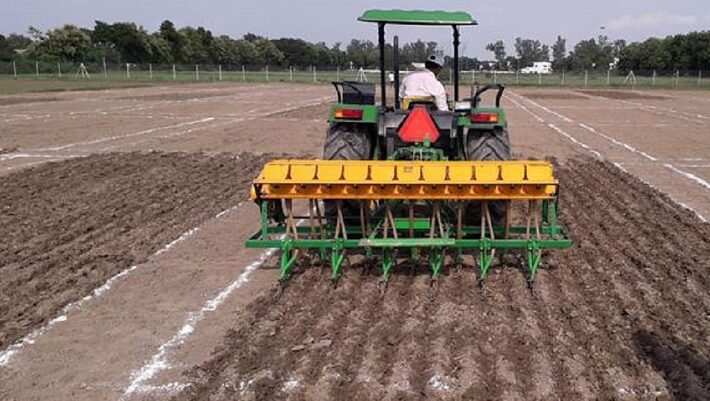Transformative adaptation: from climate‑smart to climate‑resilient agriculture
- From
-
Published on
02.10.23
- Impact Area

For approaches to be transformative, what is required is a broader and more comprehensive understanding and appreciation of farmers’ realities and the changes needed to foster large-scale transformation in their livelihood trajectories while avoiding or mitigating the dangers of maladaptation. This means that the climate response has to involve those from numerous disciplines across the natural and social sciences. Furthermore, it has to ensure that it is embedded in transformative adaptation with more focus on tackling the root cause of vulnerability and giving more emphasis to human development.
The agricultural sector is at the forefront of the climate crisis in terms of being a significant source of greenhouse gas emissions while also being adversely impacted by rising temperatures, droughts, and floods. Much agricultural research seeks to mitigate the impacts of climate-related risk and to enhance resilience in the face of climate variability and extremes.
One area of focus has been the development and scaling of climate-smart agriculture (CSA) that reduces greenhouse gas emissions, enhances adaptation, and contributes to food security, the triple win. CSA encompasses a broad array of agricultural technologies and practices, including stress-adapted crop germplasm e.g., drought-tolerant maize varieties; conservation agriculture; agroforestry; and soil and water conservation.
Once the seemingly correct technologies and management practices are identified, then the challenge comes to scale them up through widespread dissemination among target populations, a challenge that has been readily taken up by international organizations such as the Food and Agriculture Organization (FAO) and numerous NGOs.
Parallel to this emphasis on adaptation through climate-smart agriculture, the Intergovernmental Panel on Climate Change (IPCC) Working Group 2 report, Climate Change 2022: impacts, Adaptation and Vulnerability, highlights the danger that climate responses can inadvertently lead to detrimental impacts upon vulnerable groups. Recent scientific studies refer to this outcome as “maladaptation”.
Climate adaptation projects can reinforce existing vulnerabilities either by promoting adaptation interventions that benefit powerful elites or by transferring risks and exposures between groups rather than alleviating them. In other cases, actions undertaken in the name of adaptation create new risks and sources of vulnerability, often by neglecting the unintended outcomes of project activities.
Related news
-

World Food Day 16 October: A Hungry World Knows No Borders
International Crops Research Institute for the Semi-Arid Tropics (ICRISAT)16.10.25-
Food security
-
Poverty reduction, livelihoods & jobs
When crops fail, people move not by choice, but by necessity. As families are displaced…
Read more -
-

Road to Belém: Scaling biosolutions for soil health and climate action gains momentum ahead of COP30
Multifunctional Landscapes Science Program15.10.25-
Adaptation
-
Biodiversity
-
Climate adaptation & mitigation
-
Environmental health & biodiversity
-
Mitigation
More than 40% of the world’s cultivated land is degraded, affecting more than three billion…
Read more -
-

Accelerating Sustainable Agriculture: Insights from Global Leaders at New York Climate Week
Eisen Bernard Bernardo14.10.25-
Climate adaptation & mitigation
-
Mitigation
Author: Katherine Nelson At New York Climate Week September 21-28, 2025, the World Economic Forum’…
Read more -
